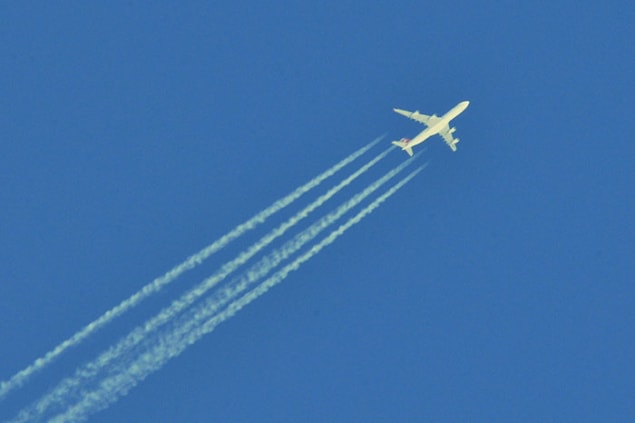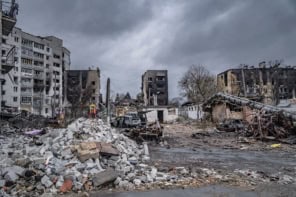
Can biofuels make flying climate friendly? More than 40,000 flights have soared through the skies powered by a blend of aviation biofuel and conventional jet fuel, and many see aviation biofuels as an effective way of reducing the industry’s carbon dioxide emissions. But can biofuels also help reduce the warming associated with aircraft contrails? A new study suggests not.
In many parts of the world contrails are a familiar sight criss-crossing the sky. These linear white trails emerge in the wake of aircraft, as water droplets and ice crystals cluster around particles emitted by the plane. Sometimes the contrails last for hours and act like high, thin ice clouds, trapping the Earth’s heat. As a result, contrails are estimated to be the largest radiative forcing component attributable to aviation.
Biofuels could mitigate aviation’s climate change impact by reducing the carbon dioxide emissions from fossil fuels. It was also hoped that biofuels’ reduced soot emissions could help reduce the amount of contrails that aircraft produce.
To investigate, Raymond Speth from the Massachusetts Institute of Technology, US, and colleagues developed the Contrail Evolution and Radiation Model (CERM). This simulates the main dynamical and microphysical processes occurring throughout a contrail’s lifetime, and computes its radiative forcing.
The researchers ran the model for one year over the US under three different scenarios. The first, baseline, scenario assumed the entire US aviation fleet used conventional jet fuel. In the second scenario the entire fleet ran on paraffinic biofuels – the type of biofuel currently in production. The remaining scenario saw the fleet run with conventional jet fuel but cleaner burning engines.
Replacing conventional jet fuel with paraffinic biofuel produces two competing effects, the team’s modelling found. On one hand, the higher water emissions associated with the biofuels resulted in an 8% increase in contrail occurrence. But the contrails themselves were made up of around 75% fewer crystals with much larger diameter (over half as wide again), which reduces the optical depth of the contrail and its albedo.
Overall Speth and his colleagues estimate that switching to paraffinic biofuels would result in a net change in contrail radiative forcing of between –4% and +18%. Meanwhile, the researchers showed that a switch to cleaner burning engines using conventional aviation fuel would result in a net change in contrail radiative forcing between –13% and +5%.
“In the short term – one to two years – it seems that the additional contrails resulting from switching to paraffinic biofuels would likely lead to more warming,” said Speth, whose findings are published in Environmental Research Letters (ERL) .
Over the longer term the importance of the reduced carbon dioxide emissions resulting from paraffinic biofuels may outweigh the increase in warming from extra contrails. “Despite prior expectation that paraffinic biofuels would lead to a lower contrail impact, we’ve shown that the effect of paraffinic biofuels on contrails is not completely clear,” said Speth.
For now, cleaner burning engines appear to provide a stronger guarantee of mitigating the effect that aircraft have on climate change. However, it may be that other types of aviation biofuel currently under development may reduce contrails more. And it’s possible that burning biofuels in cleaner burning engines could bring about the desired reduction in contrails.



